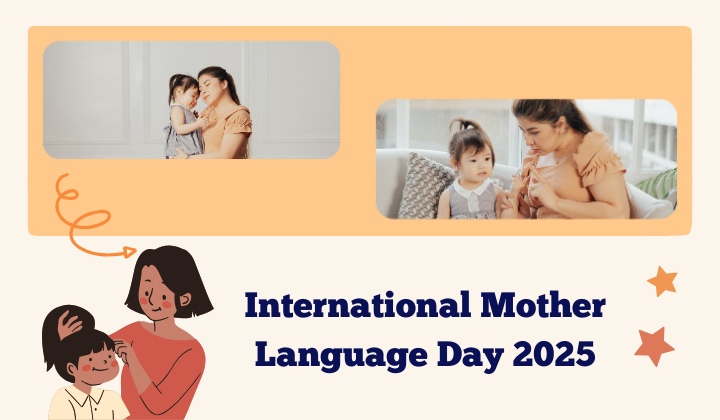Table of Contents
Language is the key to communication as it helps people share ideas and information. There are about 8,324 languages in the world, but many are disappearing due to globalization and social changes. International Mother Language Day 2025 is celebrated on 21 February across the world. Learning in one’s mother tongue makes education easier, as students understand concepts better, stay engaged and think more critically.
International Mother Language Day
International Mother Language Day is celebrated on 21 February to promote language diversity and protect native languages. It was started by UNESCO in 1999 to remember the 1952 Bengali Language Movement, where students in Bangladesh died fighting for their language. Languages are important for cultural identity and communication, helping to pass on traditions and history. With many languages disappearing, it’s vital to preserve them to keep cultures alive and support inclusive societies.
History of International Mother Language Day
The Bengali Language Movement of 1952 was a major struggle for language rights in Dhaka, East Pakistan (now Bangladesh). On 21 February 1952, students protested against the government’s decision to make Urdu the only official language, even though most people spoke Bengali. The protest turned violent, and several students lost their lives.
This movement played a key role in shaping Bengali national identity and later led to the creation of Bangladesh. In 1956, the Pakistani government recognized Bengali as a state language. In 1999, UNESCO declared 21 February as International Mother Language Day to honor this struggle and promote linguistic diversity worldwide.
Significance of International Mother Language Day
UNESCO supports learning in different languages and believes studying in one’s mother tongue helps in better understanding, engagement, and thinking. This day reminds us to protect native and minority languages so they don’t disappear. By doing this, we keep our cultural heritage alive and support global development.
Theme of International Mother Language Day
The purpose of the “Silver Jubilee Celebration of International Mother Language Day” theme is to commemorate 25 years of efforts in promoting linguistic diversity, multilingual education, and the preservation of mother tongues worldwide. This milestone highlights the achievements made since the day was first recognized and reinforces the ongoing need to protect minority, indigenous, and endangered languages.
- By celebrating this Silver Jubilee, the theme aims to
- Reflect on progress in language preservation and education.
- Raise awareness about the importance of linguistic diversity in cultural identity.
- Encourage action to safeguard disappearing languages.
- Strengthen multilingual education for inclusive and equitable learning opportunities.
The Importance of Linguistic Diversity in a Globalized World
In today’s globalized world, linguistic diversity is essential because it enhances creativity and innovation, fosters cultural understanding, encourages inclusivity, and facilitates better communication and collaboration among diverse populations. By offering a variety of viewpoints and ways of thinking through various languages, linguistic diversity ultimately contributes to a more cohesive and interconnected society.
Some key aspects of the importance of linguistic diversity:
- Cultural preservation: Each language carries unique cultural nuances and traditions, so preserving linguistic diversity helps safeguard cultural heritage and identity.
- Global communication: In a world with interconnected economies and societies, multilingualism enables effective communication and collaboration across borders.
- Cognitive benefits: Studies suggest that learning multiple languages can enhance cognitive abilities like problem-solving, critical thinking, and memory.
- Economic advantages: Businesses with diverse linguistic capabilities can access wider markets, attract a broader talent pool, and better understand customer needs.
- Social inclusion: Recognizing and valuing multiple languages promotes inclusivity and reduces the marginalization of minority language communities.
- Innovation and creativity: Exposure to different linguistic perspectives can spark new ideas and creative solutions to problems.
- Empathy and understanding: Engaging with diverse languages helps people develop empathy and better understand different worldviews.
Challenges Exist in Maintaining Linguistic Diversity:
The dominance of a few global languages like English can threaten the survival of smaller languages. Many languages are facing extinction due to factors like migration and lack of support.



 IBPS Final Result 2025 Coming Out Tomorr...
IBPS Final Result 2025 Coming Out Tomorr...
 Simple Tips to Avoid Common Mistakes In ...
Simple Tips to Avoid Common Mistakes In ...
 Important Topics & Shortcuts for IDB...
Important Topics & Shortcuts for IDB...


